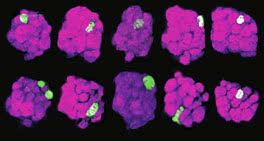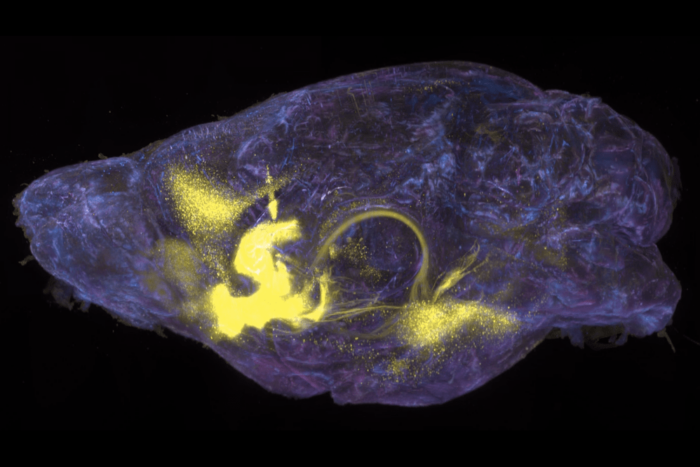In flies, odorant receptors work together
Locating a bruised, three-day-old banana takes a keen sense of smell. Yet fruit flies have just 62 different odorant receptors – compared to a thousand or more that exist in humans. A new paper published this week by Rockefeller University researchers Leslie Vosshall and Elane Fishilevich shows how that limited array is organized into a comprehensive system of odor detection.

Smell map. By tracing the location of nerve cells that produce specific odorant receptors, scientists have linked dozens of the proteins — important for detecting scents — to specific areas of the fruit fly brain. The findings suggest how the flies’ odorant receptors can work together to detect hundreds of scents despite their limited array of just 62 receptors.
Vosshall and Fishilevich, who study the olfactory system of fruit flies as a model for understanding how mammals detect smells, looked at 49 odorant receptors – proteins that detect scents – and matched up which nerve cells are linked to which receptors to create an olfactory map for the fly. In doing so, they discovered an important difference between flies and mammals.
In mammals, the rule is “one neuron, one receptor,” the researchers say. During development, when a nerve cell chooses a receptor, that receptor helps guide the nerve to the correct location in the brain. The presence of two receptors would lead to major confusion.
In the fruit fly, however, this rule does not apply. “We found that about 15 percent of the odorant receptors are co-expressed in the fruit fly, something that does not happen in mammals,” says Vosshall, who is head of Rockefeller’s Laboratory of Neurogenetics and Behavior. “This is more than just a rare exception, and we didn’t even look exhaustively through all the combinations.”
Based on their research, and previous findings, Vosshall and Fishilevich propose that in some cases, one of the receptors might be repressing the other. This might help different nerve cells be more specific in the smell to which they respond.
“Co-expressing different odorant receptors may allow the fly to build different combinations that can help a nerve cell respond to a unique set of smells,” says Vosshall. “We still have to test this idea directly, but the frequency of it in the fly means it is definitely something we have to pay attention to.”
Another finding also emerged from the study. Certain odorant receptors, the researchers found, connect directly to an area of the brain that has been linked to courtship and mating behavior. “Like other insects, and possibly even humans, fruit flies communicate with each other with chemicals called pheromones,” says Vosshall. “We don’t know anything about fly pheromones, but having smell neurons that likely respond to them is an important first step.”


